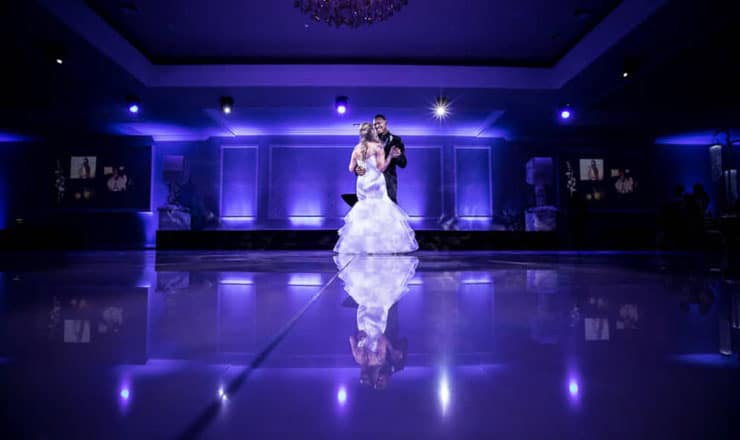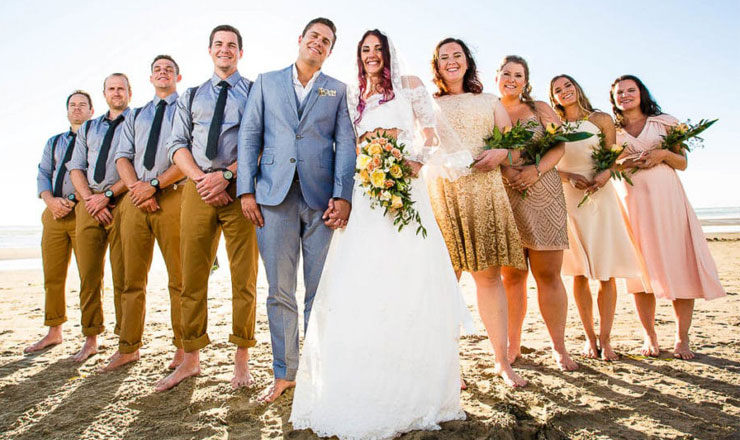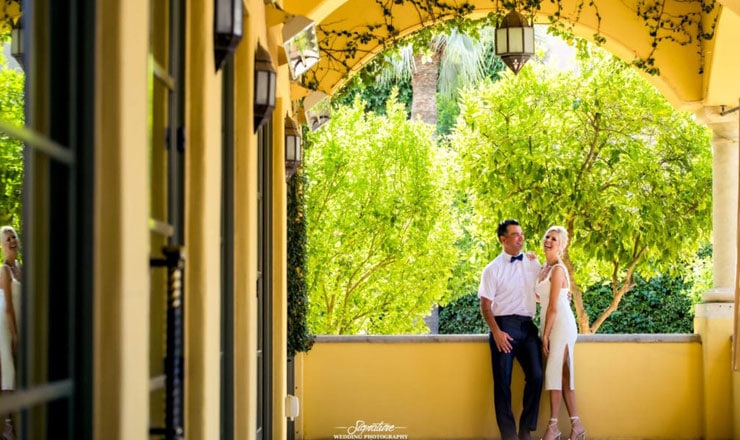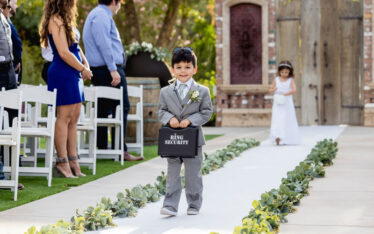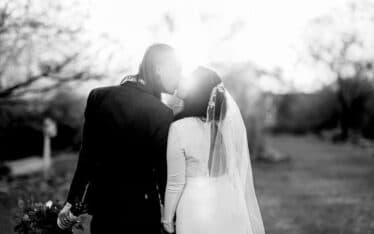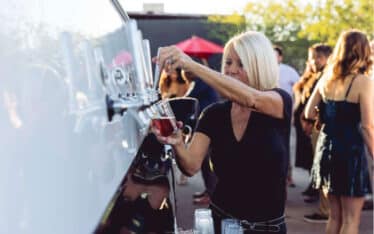Each wedding is a little different and unique. When it comes to wedding photography, one basic but important distinction is the difference between indoor and outdoor locations. It’s important to prepare properly for the environment and to make sure you have the right gear.
Indoor Wedding Tips
There are certain benefits to an indoor wedding. You don’t have to worry about the weather, for one thing. Regardless of the weather forecast, you can have unexpected storms, cloud cover, or wind. At the same time, when you’re shooting an indoor wedding, you have the disadvantage of needing to work mainly with artificial light. You may get natural light coming in through a window, skylight, or glass door, however, you can’t always count on this. Here are some guidelines for indoor wedding photos.
- Take advantage of windows. One advantage of an indoor venue is that the amount of light you have to work with is mostly predictable. When shopping around for a venue, make sure you consider the lighting. Large windows are always a plus. Keep in mind that the venue may have different lighting depending on the time of day. Try to visit the venue at least one during the time of day in which your wedding will be taking place.
- Avoid mixing natural and artificial light. If a room or area is well lit by a window, keep the electric lights off. Artificial light can cause shadows to appear and interfere with the illumination of natural light. For example, mixing natural and artificial light can distort skin tones, something you definitely don’t want to risk at a wedding.
- Move things around for optimal effect. When shooting outdoors, you have limited control over the environment. Indoors, however, you’re usually free to move things around. You can rearrange furniture to make the best use of the space. You can create more room near a window, adjust the lighting, or make temporary changes to the décor on the walls.
- Use backdrops. One way to increase light indoors is to use a white or reflective backdrop. This could be especially useful behind the site of the wedding ceremony.
Outdoor Wedding Tips
An outdoor wedding presents a different set of challenges. You have more natural light, weather permitting. However, there are tricky factors, such as the position of the sun. Keep these tips in mind when shooting outdoor wedding shots.
- Plan your shots based on the time of day. Certain times of day are better than others for outdoor photos. Photographers know that the optimal times for outdoor shots tend to be sunrise and sunset, which doesn’t usually sync with wedding schedules. However, late afternoon ceremonies are common, which are closer to sunset. You probably want to avoid mid-day, as this is the worst lighting if the sun is directly overhead.
- Shade can be your friend. If the wedding is under a tent or other covering, there’s less to worry about regarding the time of day. If the ceremony is completed before sunset, you’ll have plenty of light without glare. Coverings, of course, are also useful as protection against rain.
- When the sun is directly overhead, you’ll need to make the necessary adjustments. As noted, it’s best to shoot earlier or later in the day. However, in some cases, the wedding may be scheduled closer to noon on a sunny day. In this case, you have to make the best of it. When doing portraits, such as bridesmaids, parents of the bride and groom, and family shots, you have some leeway for setting up your shots. You can use a reflector, which is either a natural or a portable device to reduce shadows.
- Include scenic locations. With indoor venues, there are usually limited scenes to shoot apart from the people. Outdoor weddings are often held at locations with lots of interesting backgrounds. You can often make use of a site’s natural beauty whether it is a beach, a scenic overlook, or an historic site. A wide-angle lens allows you to incorporate the scenery and atmosphere of the location. With video, you can take footage of the surroundings before focusing on the event and guests.
- Be prepared for low light environments. Many weddings run into the evening, even if the ceremony is held in the afternoon. You need to be prepared for outdoor night shots, especially during warmer weather. Having devices such as speedlights or strobe lights allows you to capture people and scenery in low light environments.
Prepare For Photos in Multiple Locations
When preparing to photograph a wedding, the best general rule is to be prepared for multiple locations, both indoors and outdoors. Some weddings have different venues for the ceremony and reception. In such cases, you may be moving between indoor and outdoor locations. For example, the ceremony may be outdoors and the reception indoors. Even when everything takes place in a single venue, taking shots in different settings provides a greater and more interesting variety of photographs. If the wedding is indoors, you may want to take some portraits outside. It’s also nice to capture shots of the couple leaving and getting into the so called “get-away vehicle”. These are all reasons that you should always be prepared to take both indoor and outdoor shots.
Both indoor and outdoor wedding photographs have their advantages as well as their challenges. The key is to make the most out of both types of locations. Preparation includes getting familiar with the venue or venues and taking the time of day into consideration.
